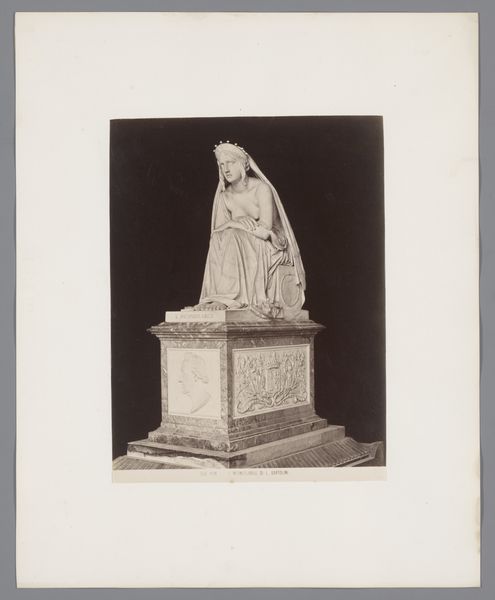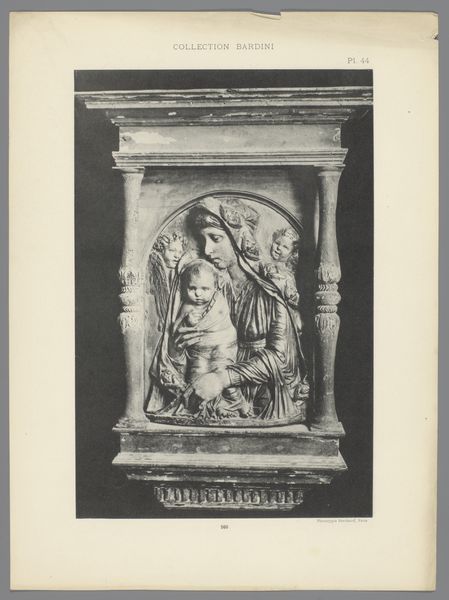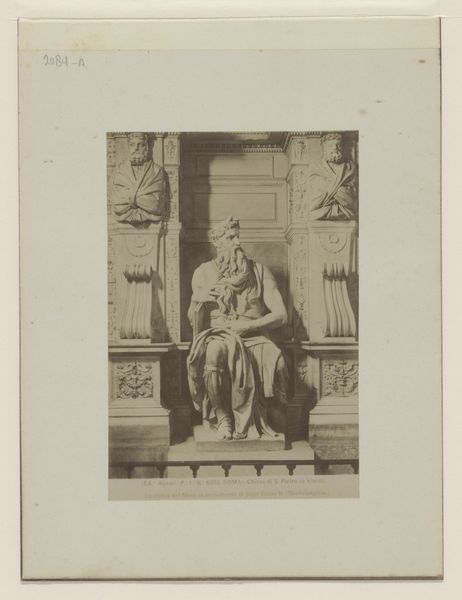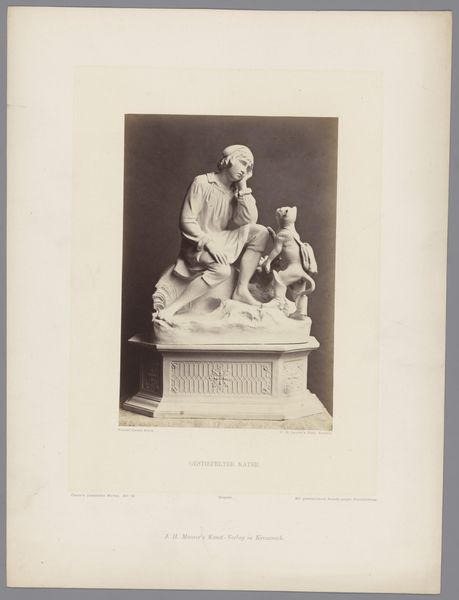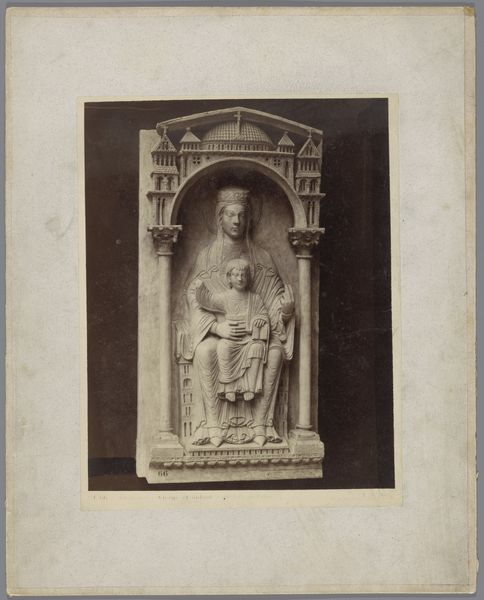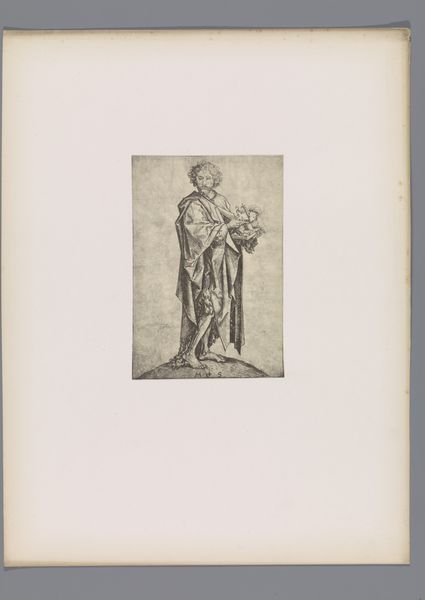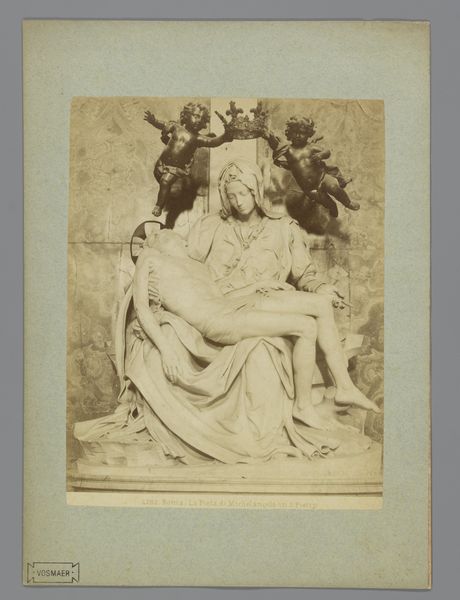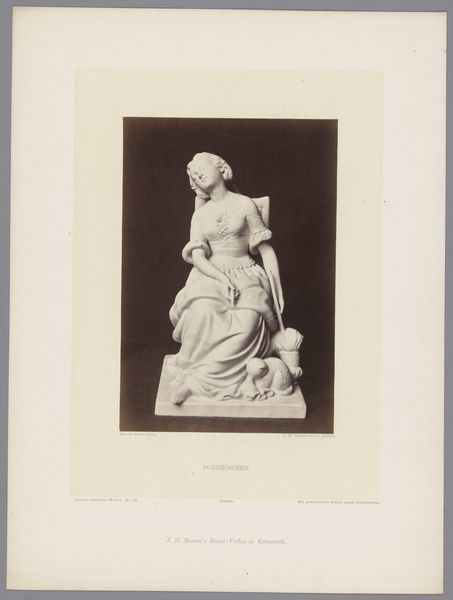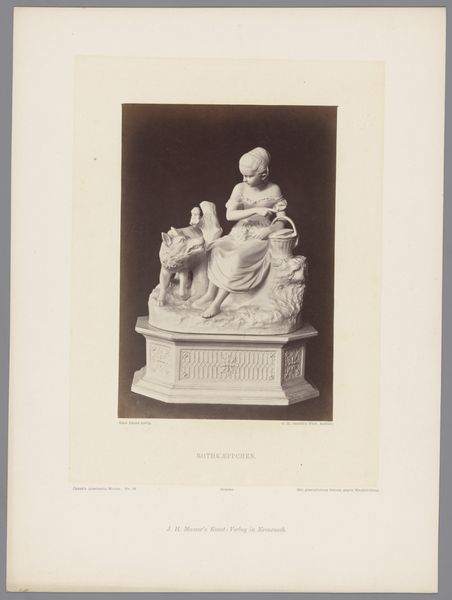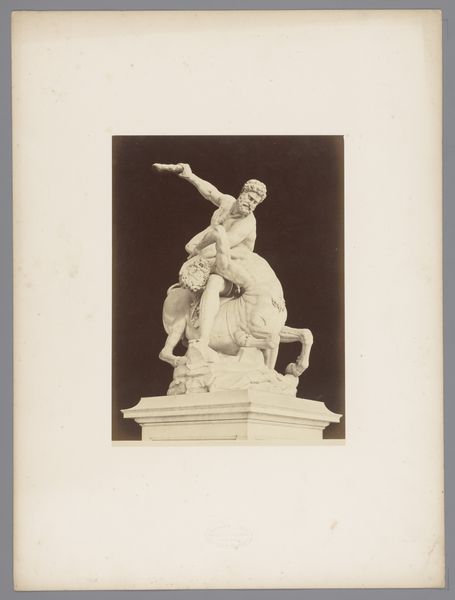
print, photography, sculpture, gelatin-silver-print
#
portrait
#
medieval
# print
#
figuration
#
photography
#
classicism
#
sculpture
#
gelatin-silver-print
#
academic-art
#
monochrome
Dimensions: height 393 mm, width 310 mm
Copyright: Rijks Museum: Open Domain
Editor: So, this gelatin-silver print from before 1885, titled "Pietà in de San Marco in Venetië" by Carl Heinrich Jacobi… It's immediately striking because it resembles classical sculpture. There is so much grief palpable in this photographic reproduction of what looks like a Pietà. How do you interpret the photograph and its relation to academic art and classical sculpture? Curator: It's crucial to consider how photography, as a relatively new medium in the late 19th century, engaged with established artistic traditions. Reproducing a sculpture like the Pietà in the San Marco cathedral in Venice isn’t just about documentation. Jacobi is actively participating in the era’s fascination with realism. Think about it – how did this new medium influence the consumption and understanding of sculpture at the time? Was it about accessibility, veneration, or something else? Editor: That’s a great point! Did photography play a role in democratizing access to great artworks or solidifying canonical status? It does seem to place it in a new context for consumption. Curator: Precisely. Jacobi's photograph makes this devotional image a portable, reproducible object. That shift has enormous implications for art's social function and the dissemination of cultural values. How do you think this portability changes how people connect to such powerful imagery? Editor: It makes me consider who was supposed to access these artworks and how their social and cultural contexts impact meaning! I see that a photograph changes everything. Curator: It absolutely does. Jacobi's Pietà offers us a fascinating glimpse into the dialogue between art, technology, and societal values in the late 19th century. Editor: I learned how crucial it is to question art's role, how photography changes access and appreciation, and how historical context truly matters. Thanks for your perspective!
Comments
No comments
Be the first to comment and join the conversation on the ultimate creative platform.
